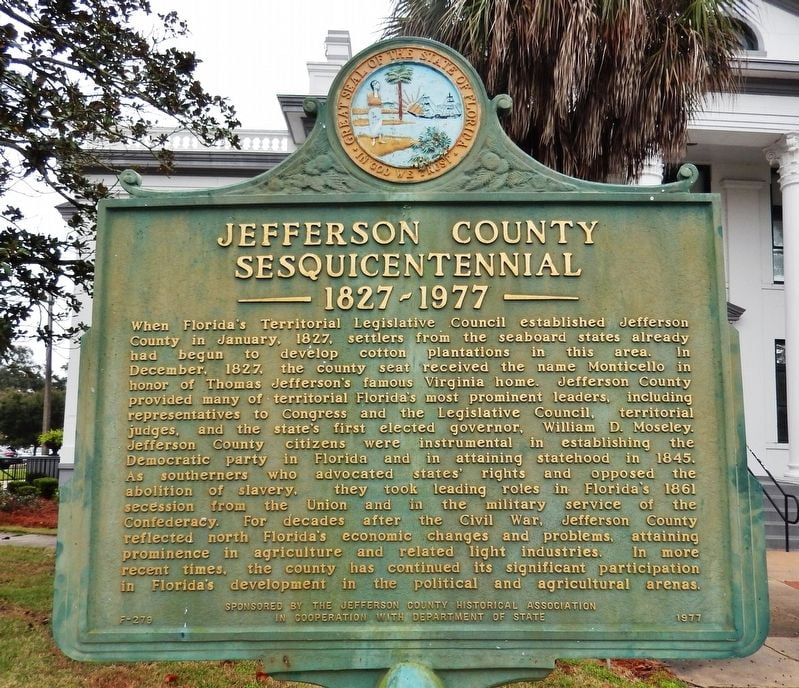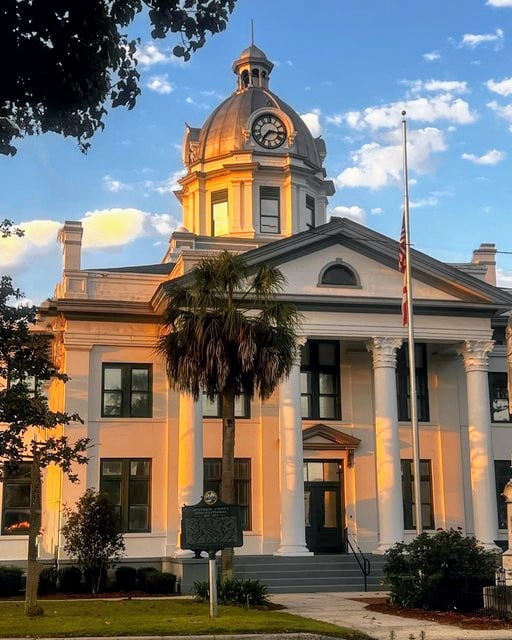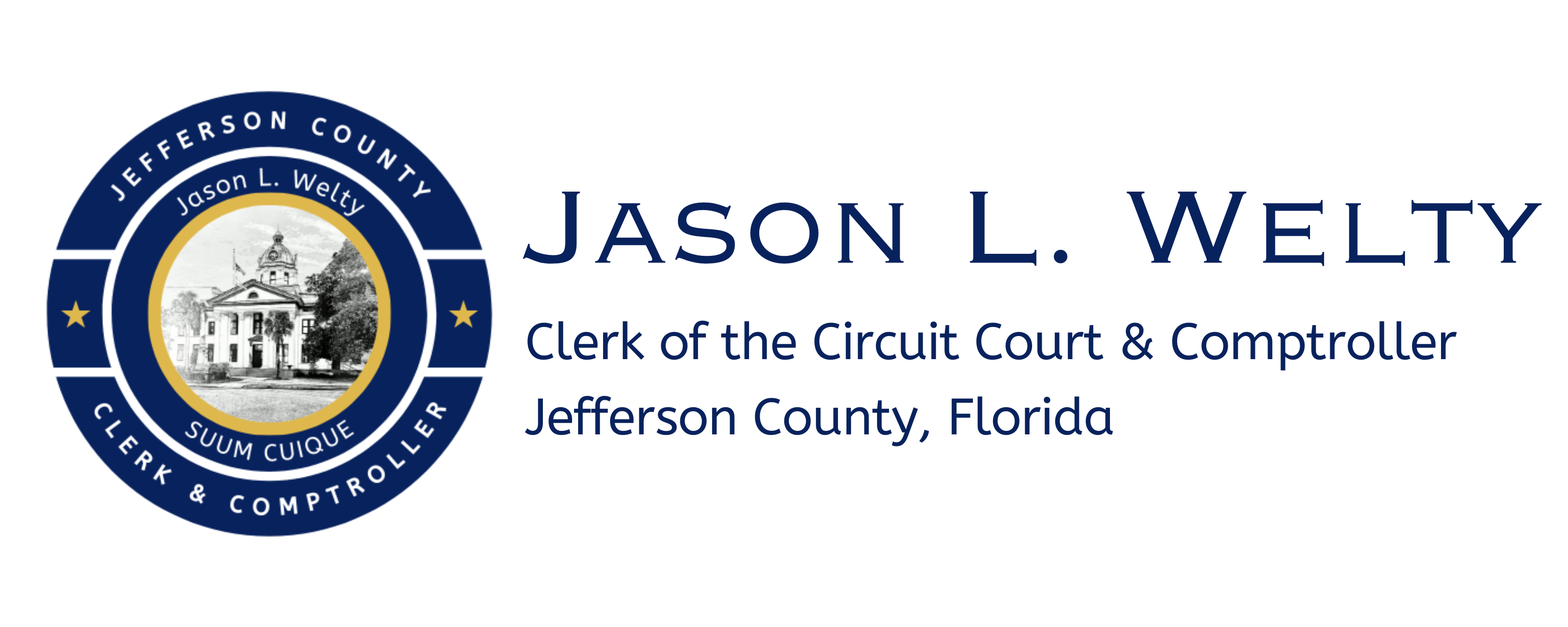History of the Courthouse
Jefferson County Florida was founded on January 20, 1827, after the third President Thomas Jefferson. For Jefferson County citizens, the courthouse in the town's center is the most notable landmark, and it will remain the most important tie to a viable downtown community. Present and future generations will want to preserve and properly maintain the structure, for it is a soundly constructed, handsomely designed, debt-free public building, which could not be duplicated at any cost. The motto inscribed on the west entrance, Suum Cuique, is Latin for "to each his own," generally meaning each constituent will receive the fair treatment he or she deserves.

There have been few structural changes since the courthouse was built in 1908. However, in 1968, following the findings of a grand jury, the courtroom was modernized. The ceiling in the 60-year-old room was lowered, central air conditioning was installed, and the balcony was converted into the attic. This change also created offices for the Property Appraiser and Circuit Judge. County government has far outgrown the courthouse in needed space. Where all offices, including school administration, were formerly in the courthouse, now many offices are in rented or owned county buildings located elsewhere, including the offices of the County Agent, School Administration, Building Inspector, Library, Property Appraiser, Tax Collector, Supervisor of Elections, and Sheriff. The offices remaining in the courthouse are Clerk of the Circuit Court and the County and Circuit Judges.
Structurally, the courthouse is sound. It was built of poured concrete slabs, and the interior walls are one foot thick. Three vaults are located in the various offices, with eighteen-inch-thick walls. The floors are pine and ceramic tile. Two floors are used for office space and court proceedings, while the basement is used for storage. There are four chimneys with three fireplaces each--a reminder that coal was used to heat the courthouse in the early days. Two big pot-bellied, coal-burning stoves were used to heat the courtroom. Much of the original courtroom furniture is still used: benches, the judge's bench, the jury box, et cetera., fashioned of oak and never losing its historic beauty. Marble plaques are located in the halls naming the officials responsible for planning the 88-year-old structure.
In 1993, Architect Ken Smith in Jacksonville and Mad Dog Construction and Design in Tallahassee were hired by the County Commission to begin the restoration and modernization of the courthouse. The first floor and basement were revitalized, adding ground-floor restrooms, central heat, air conditioning, improved electrical service, and painting. In 1997, Architect Ken Smith and E.C. Kenyon Construction Company out of Jacksonville, Florida, were hired by the County Commission to begin a $600,000 project to restore the second and third floors, add elevator and fire stairs, and clean and paint the exterior of the building.

About 1905, the citizens of Jefferson County initiated a move to build a new courthouse to replace the structure which had stood for about 70 years. The population had grown to approximately 17,000 (more than it is today), and the voters felt that they needed a more modern courthouse to serve the needs of the citizens. In November 1908, they approved a $35,000 bond issue by a vote of 416 to 239. E.C. Hosford of Eastman, Georgia, and Bartow, Florida was employed as architect, and he designed a building after the style of Thomas Jefferson's Monticello, Classic Revival with French influence. The Mutual Construction Company of Louisville, Kentucky won the construction contract with a low bid of $39,412. Progress was satisfactory until the building was nearing completion. The County Commission planned a grand dedication ceremony for June 24, 1909. Then, a dispute occurred between the commission on the one side and the architect and Mutual Construction on the other. Hosford was fired and the commission refused to accept the building without certain structural improvements. After a delay of several weeks, Mutual Construction paid a $1,200 penalty and the building was accepted. The Commission passed a resolution commending Dan Finlayson, Chairman of the Building Committee, for his efforts on behalf of the county. The dedication ceremony finally occurred in 1910. Samuel Pasco made his famous historical address; Judge John Malone followed with a brief speech; the Masonic Order was credited with laying the cornerstone, and the proud community enjoyed a barbecue dinner.

